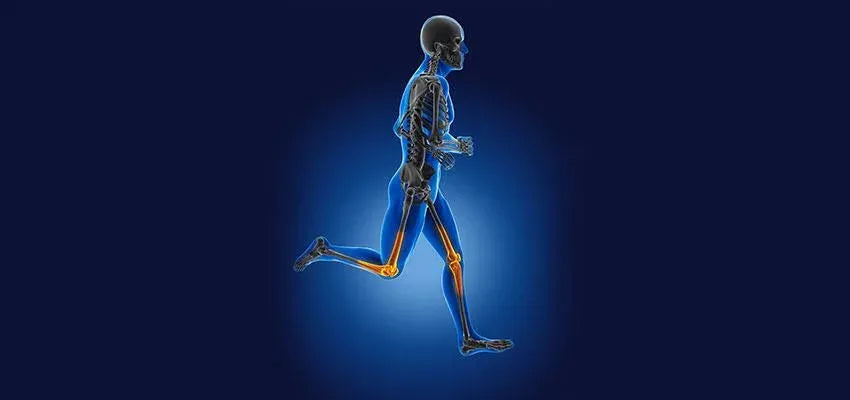
Which Medical Conditions Can Speed Up Aging
The process of getting older, both physically and chronologically, is known as aging. A person's physical and mental activity level normally declines over time with advancing age. Some people appear to age more quickly than others of their age due to a variety of reasons. In this article, we'll see how certain medical conditions can speed up aging in people.
Signs of premature aging:
Premature aging occurs when the normal indications of aging in an individual appear early, i.e., your body seems older than your actual age. Among the early warning signs of aging are:
- Changes in skin tone
- Wrinkles
- Age spots
- Dryness of skin
- Greying of hair
- Sunken cheeks
- Sagging and hyperpigmentation of chest
Factors affecting the aging process
A few factors that can affect the aging process may include:
- Lifestyle changes such as diet and physical activity
- Environmental factors such as exposure to sunlight, pollution, allergens, and certain toxins that contribute to aging
- Hormonal imbalances such as changes in the level of thyroid hormone, estrogen, and testosterone
- Genetics, where age-related conditions may pass down from one generation to another (e.g. Alzheimer’s disease)
- Chronic illnesses such as diabetes, hypertension, osteoporosis, etc.
Medical conditions affecting aging
Certain chronic medical conditions can also speed up the aging process. These may be:
-
Bone-related
Osteoporosis: All individuals possess two types of bone cells: osteoblasts (which form bone cells) and osteoclasts (which break down bone cells). In osteoporosis, the activity of osteoclasts is increased when compared to osteoblasts. These osteoclasts send signals throughout the body that can promote inflammation. This chronic inflammation may result in an increase in the risk of cardiovascular diseases, dementia, cancer, as well as acceleration of the aging process. However, osteoporosis is more common in women as compared to men due to early hormonal changes in women associated with menopause. In men, it is usually noted after reaching the age of 65 years and above.
Osteoarthritis: It is the progressive inflammation and degeneration of bone joints, often associated with chronic pain. As we age, we all experience changes in our muscles and bones. As a result of these changes, cartilage breakdown occurs within the bone joint, which steadily worsens over time. This will result in limited joint movement, resulting in physical impairment, which is more typically associated with aging. -
Metabolic
High blood pressure: It is also known as hypertension and can be defined as the pressure exerted by the blood against the walls of the blood vessels (arteries) when the heart pumps blood. According to studies, early hypertension has a greater impact on how old a person seems than their actual age. Long-term high blood pressure can induce arterial wall thickening, affecting the flow of oxygen into the blood, heart, kidneys, and particularly the skin. Signs of aging such as dryness and wrinkles on the face results from a lack of oxygen to the skin.
Diabetes Mellitus: It is defined as an increase in blood sugar levels and is more commonly associated with brain aging and a decline in the cognitive abilities of an individual. Elevated blood sugar levels are thought to cause proteins to cling together, altering their function (e.g. collagen). As a result of this, blood sugar reacts with collagen, causing brown or age spots, as well as loss of elasticity of the skin, and premature wrinkling.
Thyroid disease: Thyroid hormone imbalances can potentially have an impact on the aging process. Symptoms of an underactive or hyperactive thyroid, such as fatigue, constipation, weight gain, depression, etc., can also be symptoms of early aging. As a result, changes in the skin, nails, hair, muscle and joint problems, cognitive decline, etc., are noticed which are usually associated with advanced age, say over 65 years.
Obesity: Obesity is defined as having a high body mass index (BMI), which is a measurement of body fat based on an individual's height and weight. Having a BMI of more than 30 is usually associated with being obese. Excess fat deposition in body parts can either cause health problems related to metabolism such as high blood pressure, diabetes, stroke, etc., or it might worsen other body systems over time such as the renal system (chronic kidney disease) or reproductive system (infertility). All of these changes in the body may eventually cause an individual's aging to accelerate. -
Heart-related
Atherosclerosis: The heart is a vital organ that circulates blood throughout the body. Blood vessels (arteries) lose elasticity as they age and harden due to fat deposition on the inner walls, termed as atherosclerosis. This causes the heart to pump blood more forcefully, leading to health problems such as high blood pressure and stroke. These problems, in turn, may have an impact on other body organs such as the kidneys, liver, intestines, etc., resulting in poor functioning and output of these organs, thereby speeding up aging. - Stomach-related: Bloating, acid reflux, constipation, and other stomach-related problems may occur as one matures. These are typically connected with advancing age and weakened stomach and other digestive organ functions. For example, with aging, the acid productions in the stomach decrease, as do muscle contractions. As a result, it disrupts food digestion and water absorption, which finally leads to constipation, leading to additional strain on the gastric muscles. A few examples of stomach diseases that can speed up the aging process may include, Crohn’s disease, peptic ulcers, gastro-oesophageal reflux disease, constipation, and certain stomach cancers.
A few other rare diseases that may affect the aging process in individuals include genetic conditions such as progeria which is also known as Hutchinson Gilford progeria syndrome.
Signs and symptoms of premature aging can occur at any point after reaching the age of 40’s and beyond, and these could be either due to one’s casual behaviour towards their health such as leading a sedentary lifestyle, or due to certain environmental conditions. Furthermore, in a few rare circumstances, individuals may experience premature aging. If you observe any signs of aging, it is always preferable to seek expert counsel.


